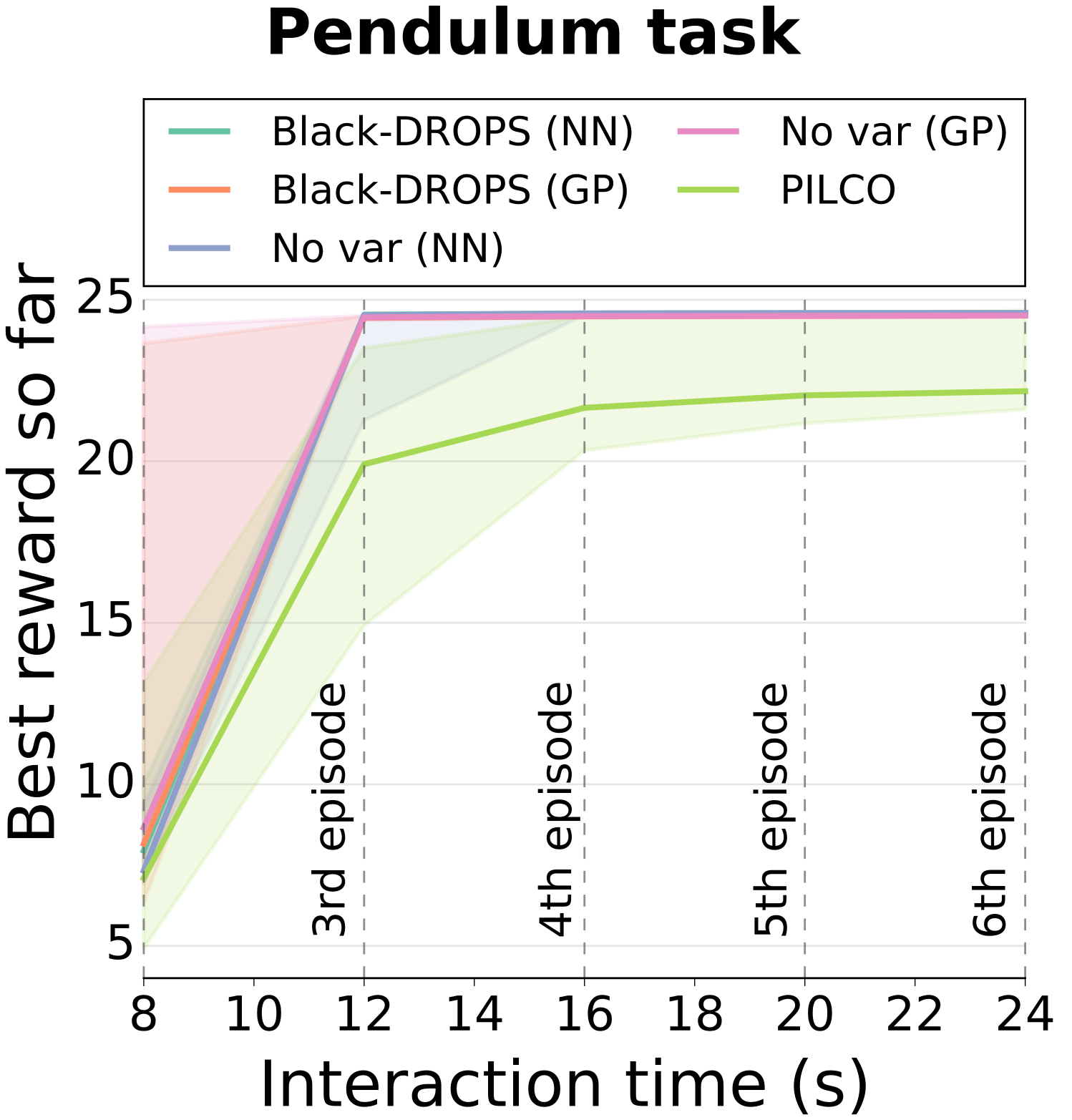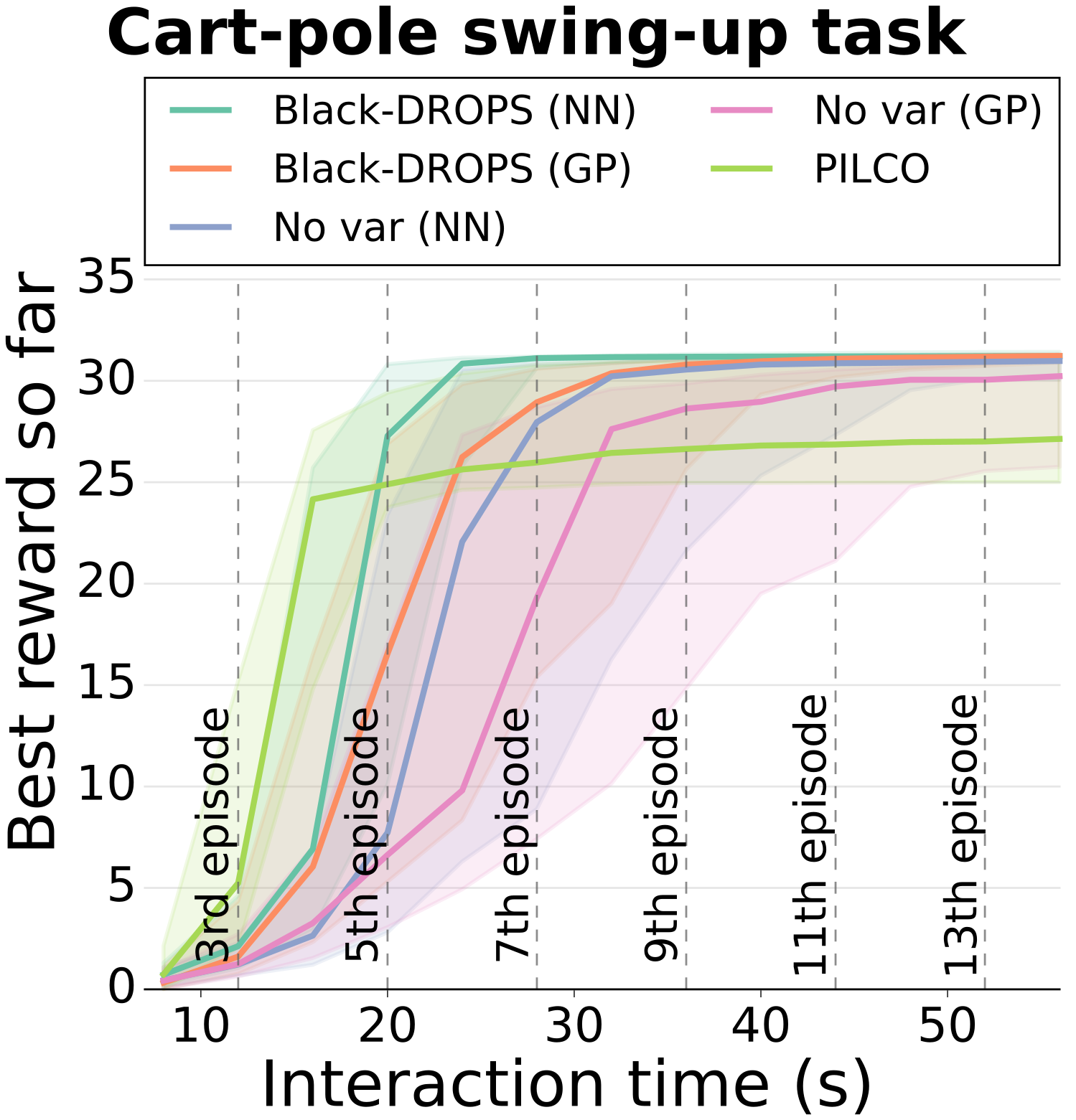Code for the:
- IROS 2017 paper: "Black-Box Data-efficient Policy Search for Robotics"
- ICRA 2018 paper: " Using Parameterized Black-Box Priors to Scale Up Model-Based Policy Search for Robotics"
If you use our code for a scientific paper, please cite:
Chatzilygeroudis, K., Rama, R., Kaushik, R., Goepp, D., Vassiliades, V., & Mouret, J.-B. (2017). Black-Box Data-efficient Policy Search for Robotics. Proceedings of the IEEE/RSJ International Conference on Intelligent Robots and Systems (IROS).
In BibTex:
@inproceedings{chatzilygeroudis2017black,
title={{Black-Box Data-efficient Policy Search for Robotics}},
author={Chatzilygeroudis, Konstantinos and Rama, Roberto and Kaushik, Rituraj and Goepp, Dorian and Vassiliades, Vassilis and Mouret, Jean-Baptiste},
booktitle={Proceedings of the IEEE/RSJ International Conference on Intelligent Robots and Systems},
year={2017},
organization={IEEE}
}
or:
Chatzilygeroudis, K., & Mouret, J.-B. (2018). Using Parameterized Black-Box Priors to Scale Up Model-Based Policy Search for Robotics. Proceedings of the International Conference on Robotics and Automation (ICRA).
In BibTex:
@inproceedings{chatzilygeroudis2018using,
title={{Using Parameterized Black-Box Priors to Scale Up Model-Based Policy Search for Robotics}},
author={Chatzilygeroudis, Konstantinos and Mouret, Jean-Baptiste},
booktitle={Proceedings of the International Conference on Robotics and Automation},
year={2018},
organization={IEEE}
}
- Konstantinos Chatzilygeroudis (Inria): http://costashatz.github.io/ --- actively developing/maintaining the code
- Rituraj Kaushik (Inria): http://tansigmoid.com/
- Roberto Rama (Inria)
Black-DROPS is funded by the ResiBots ERC Project (http://www.resibots.eu).
- Clone the repo recursively:
git clone --recursive https://github.com/resibots/blackdrops.git(orgit clone --recursive git@github.com:resibots/blackdrops.git) - If you follow the advanced installation, you do not necessarily need to clone recursively the repository.
The Black-DROPS algorithm is a model-based policy search algorithm (the ICML 2015 tutorial on policy search methods for robotics is a good source for reading) with the following main properties:
- uses Gaussian processes (GPs) to model the dynamics of the robot/system
- takes into account the uncertainty of the dynamical model when searching for a policy
- is data-efficient or sample-efficient; i.e., it requires very small interaction time with the system to find a working policy (e.g., around 16-20 seconds to learn a policy for the cart-pole swing up task)
- when several cores are available, it can be faster than analytical approaches (e.g., PILCO)
- it imposes no constraints on the type of the reward function (more specifically we have examples where the reward function is learned from data)
- it imposes no constraints on the type of the policy representation (any parameterized policy can be used --- for example, dynamic movement primitives or neural networks)
To get a better idea of how well Black-DROPS works please check the paper. Here are the main figures of the paper for quick reference (the "No var" variants are variants of Black-DROPS without taking into account the uncertainty of the model):
In short, you should:
- NOT expect Black-DROPS to find very fast (in interaction time) high performing policies at every run: in the cart-pole swing up task, for example, the main trend (median) is that Black-DROPS finds a high performing policy after 16-20 seconds of interaction with the system, but it does fail sometimes completely to find any working policy after 15 episodes (60 seconds of interaction time); this also holds for analytical approaches like PILCO (see the paper for more details)
- NOT expect Black-DROPS to find high performing policies very fast (in interaction time) when dealing with high dimensional state/action spaces (e.g., less than 8-10 episodes for a 15-D state/action space) or when dealing with difficult tasks (e.g. less than 20-25 episodes for the double cart-pole swing up task); the number of points needed to have a good model of the dynamics increases exponentially with the dimensions of the state/action space
- NOT expect Black-DROPS to run fast (in computation time) in small computers; our results suggest that at least 8-12 cores are needed to get reasonable computation times for Black-DROPS (Black-DROPS heavily utilizes parallelization to improve its performance)
Please look at the installation guide. You will find detailed guidelines on how to properly install all the dependencies, compile the Black-DROPS code and run scenarios. There is also an advanced installation guide which is recommended for users experienced with build systems and command line usage.
Please look at the implemented scenarios page. You will find a brief description of all the implemented scenarios and recommended parameters (e.g., number of maximum function evaluations for CMA-ES) for running them.
Please look at the basic tutorial. You will find detailed comments on how to create, compile and run your own scenarios.
Please look at the DART scenarios tutorial. Make sure that you have already read the basic tutorial, before proceeding to this one.

